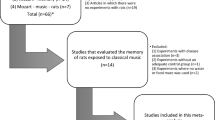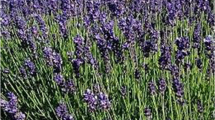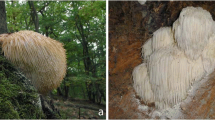Abstract
Chinese medicine has been used in treating pain for a long time. Much progress has been made in studies on the mechanism of the analgesic effect of Chinese medicine in animal experiments. It is found that the analgesic action may be related to the following actions: (1) Reducing the secretion of peripheral algogenic substances and inducing the secretion of pain-sensitive substances; (2) Alleviating the accumulation of local algogenic substances; (3) Increasing the release of endogenous analgesic substances; (4) Regulating c-fos gene and increasing the secretion of such substances in the central nervous system, etc. In this paper, the experimental methods and analgesic effect of Chinese medicines are reviewed.
Similar content being viewed by others
References
Xin HW, Shi XY, Luo X, et al. Pharmacodynamic action of Dian-xue-gao. Tradit Chin Drug Res Clin Pharmacol (Chin) 2000;11(5): 281–283.
Liu YQ, Chen H, Li CH. Study on analgesic effect of Chinese traditional medicine Ai Zheng Zhen Tong San. Chin J Comp Med (Chin) 2003;13(5):288–290.
Zhou J, Fang SP, Qi Y, et al. Effect of Gegen Decoction on inflammatory media in joint of adjuvant arthritis rats. Chin J Exp Tradit Med Formul (Chin) 2001;7(3):29–31.
Yang MM, Tong L, Chen YR. Experimental study on analgesic effect and anti-inflammatory effect of ethanol extraction of Dulcamara. Chin Arch Tradit Chin Med (Chin) 2005;23(1):51–54.
Wu X, Chen DH, Lei L, et al. Anti-infalmmation and analgesic effects of Panax japonicus. Pharmacol Clin Chin Materia Med (Chin) 2007;23(1):43–45.
Tang CP, Jiang T, Gong MJ, et al. The study on the analgesic effects and mechanism of the Tongfengling capsules. J Guangdong Coll Pharm (Chin) 2007;23(3):301–303.
Zhou XS, Yi DB. Studied on the analegsic and anti-inflammatory effects of Clematis Chinensis Osbeck in mice and rats. Chin Clin Med (Chin) 2003; 15(4):12–13.
Liu L, Zhu QS, Wang LM, et al. Anti-inflammation and analegsia compound Weilingxian mixture. Heilongjiang Med Pharm (Chin) 2004;27(1):22–23.
Schwei MJ, Honore P, Rogers SD, et al. Neurochemical and cellular reorganization of the spinal cord in a murine model of bone cancer pain. J Neurosci 1999;19:10886–10897.
Wacnik PW, Eikmeier LJ, Ruggles TR, et al. Functional interactions between tumor and peripheral nerve: morphology, algogen identification, and behavioral characterization of a new murine model of cancer pain. J Neurosci 2001;21:9355–9366.
Sarlak A, Gundes H, Ozkurkcugil C, et al. Solitary calcaneal metastasis in superfi cial bladder carcinoma. Int J Clin Pract 2000; 54: 681–682.
Medhurst SJ, Walker K, Bowes M, et al. A rat model of bone cancer pain. Pain 2002; 96: 129–140.
Xiang HB, Yang H, An K, et al. Pathological mechanisms of pain related and model of bone cancer pain. J Clin Anesthesiol (Chin) 2005; 21(5):350–352.
Cain DM, Wacnik PW, Simone DA. Animal models of cancer pain may reveal novel approaches to palliative care. Pain 2001;91: 1–4.
Yu S, Mao-ying QL, Wei PK, et al. Tongluo Sanjie Tincture relieves inflammatory and bone cancer pain in rats: an observation of outcome. Acad J Sec Milit Med Univ (Chin) 2006;27(6):684–686.
Ma WL, Zhang WB. Dialectical thinking of the mechanism of pain and analgesia. Med Philos (Chin) 2002;256(9):46–47.
Zhao ZQ. Pain and the spinal cord. 1st ed. Shanghai: Shanghai Scientific and Technical Publishers, 2000:22–40.
Jia YJ, Sun YY, Miao FL, et al. Intervention by Hua-Jian-Ba-Du membrane on cancer pain and its analgesic mechanisms. Tianjin J Tradit Chin Med (Chin) 2005; 22(2):135.
Ye HY, Xiong XQ, Wang ZP, et al. A study on the anagesic effect of Daphne Odora Var. Marginata Extract. J Gannan Med Coll (Chin) 2004;24(5):505–507.
Sun GC, Yu XF, Li DY. Compound Xiqiancao (siegesbeckiae) capsule on content of IL-1β, IL-8 in rats’ inflammatory articulus caused by sodium urate. World J Integr Tradit West Med (Chin) 2007;2(6): 329–331.
Heng XP, Zhang GH. Experimental study on analgesic effect of Insects Tongluo. Hunan Guiding J Tradit Chin Med Pharm (Chin) 1995; 1(1):33–36.
Nie H, Shen YJ, Zeng N, et al. Mechanism of essential oil of Radix Angelicae dahuricae (EOAD) on neural transmitter of pain model of rats. Pharmacol Clin Chin Materia Med (Chin) 2002;18(3):11–14.
Zhou B. Studying the relive pain function of Bidens Bipinnata L. Modern Chin Med (Chin) 2007;9(2):21–22.
Qin L, Peng X, Zhang SH, et al. Influence of monkshood root-peony root combination on infl amation-induced agents and free radicals. China J Chin Materia Med (Chin) 2000; 25(6):370–373.
Yan SQ, Wu SQ, Feng LY, et al. Mechanism for analgesic actions of Shaoyao Gancao Decoction. J Anhui Tradit Chin Med Coll (Chin) 2001; 20(6):42–44.
Xu JY, Wang FQ, Zheng WF, et al. Influence of Jin-Tie-Suo on pain threshold and NO/NOS in serum of experimental mice. Chin Arch Tradit Chin Med (Chin) 2004;22(1):82–84.
Meng MH, Ren QH, Ma CH, et al. Influence of Ai-tong-ke on microcirculation and lipid peroxide and the superoxide dismutase. Chin J Cancer Prev Treat (Chin) 2002;9(5):553.
Lu F, Ren QH, Wang Li, et al. Clinical and experimental studies on Chinese medicine “Aitongke”. China Cancer 2004;13(5):325–326.
Zhang SF, Shen X, Wu JY, et al. Effects of Yangxueqingnao Granule on analgesia and cerebral blood flow. Chin J ExpTradit Med Formul (Chin) 2007;13(1):44–45,48.
Xiong YJ, Liu MJ, Liu F. Activating blood circulation to dissipate blood stasis and analgesic and anti-inflammatory of Compound Dragon’s blood liniment. Pharm Clin Chin Materia Med (Chin) 1999;15(3):30–32.
Li XZ, Li H, Ju DY, et al. Pharmacological research on analgesic effect of Gutongling ointment. J Jilin Univ (Med Ed) (Chin) 2004;30(2):201–203.
Fu X. Endogenous opioid peptide-study progress. For Med Sci: Sec Pharmacy (Chin) 2003; 30(6):339–344.
Jiang XJ, Chen ME, Ju YF, et al. Experimental study on the analgesic efficacy of Tong-Mo-Ning. Chin J Pain Med (Chin) 1996; 2(1):23–25.
Dang HZ, Teng JX, Peng ZP, et al. Research on analgesia efect of Jiuqiniantong Capsule. Pract J Med Pharm (Chin) 2003;20(8):592–595.
Lu GW. Peripheral nociceptive receptors in regulation of transcriptional. Progr Physiol Sci 2000;31(2):161–162.
Han X, Liu W, Qiu DW, et al. Study on analgesic effect of Duliang Pill extract and its effect on c-fos gene expression of periphery tissue. Chin J Exp Tradit Med Formul (Chin) 2003;9(4):34–36.
Hu YB, Zhang YF, Xu JY, et al. Influence of Compound Tall Gastrodia Tuber Agent on central neurotransmitter and catecholamines. Acad Periodic Changchun Coll Tradit Chin Med (Chin) 2003; 19 (4): 39–41.
Niu HM. Clinical and experimental study of Ai-Tong-Xin nasal drop on cancer pain. J Shandong Univ Tradit Chin Med (Chin) 1999;23(6):432–433.
Fu JR, Xu F. Study on mechanism of “Neiyixiao” relieving pelvic pain for endometriosis. Shanghai J Tradit Chin Med (Chin) 1998;32(10): 40–42.
Wang KX, Bi MG. Analgesic effect and mechanism of Tianxiedingtong san in rats. Heilongjiang Med Pharm (Chin) 2001;24(6):13–14.
Author information
Authors and Affiliations
Corresponding author
Rights and permissions
About this article
Cite this article
Yu, S., Xu, L., Wei, Pk. et al. Study on analgesic effect of traditional Chinese medicine. Chin. J. Integr. Med. 14, 151–156 (2008). https://doi.org/10.1007/s11655-008-0151-z
Received:
Published:
Issue Date:
DOI: https://doi.org/10.1007/s11655-008-0151-z




